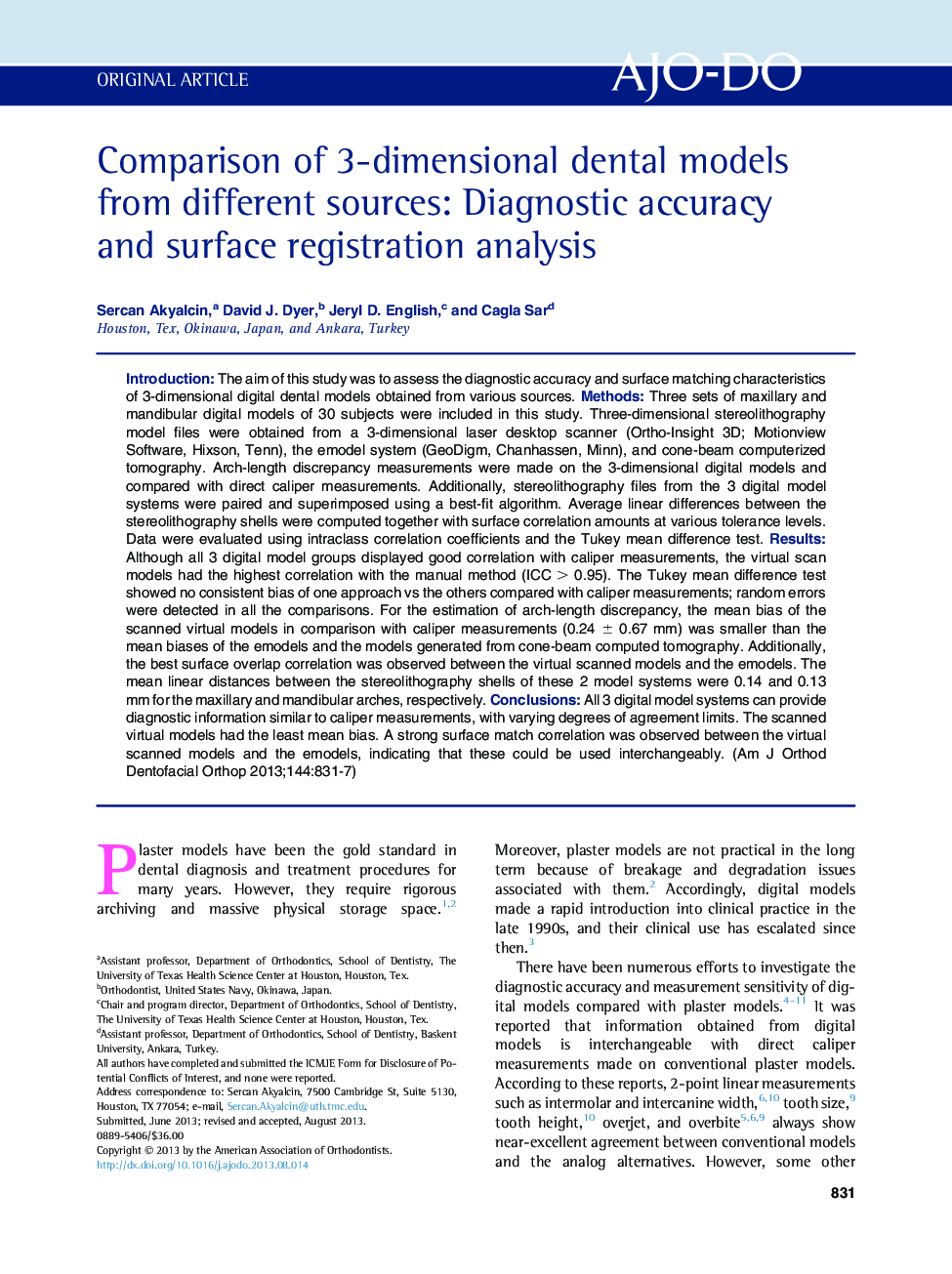| Article ID | Journal | Published Year | Pages | File Type |
|---|---|---|---|---|
| 3116441 | American Journal of Orthodontics and Dentofacial Orthopedics | 2013 | 7 Pages |
IntroductionThe aim of this study was to assess the diagnostic accuracy and surface matching characteristics of 3-dimensional digital dental models obtained from various sources.MethodsThree sets of maxillary and mandibular digital models of 30 subjects were included in this study. Three-dimensional stereolithography model files were obtained from a 3-dimensional laser desktop scanner (Ortho-Insight 3D; Motionview Software, Hixson, Tenn), the emodel system (GeoDigm, Chanhassen, Minn), and cone-beam computerized tomography. Arch-length discrepancy measurements were made on the 3-dimensional digital models and compared with direct caliper measurements. Additionally, stereolithography files from the 3 digital model systems were paired and superimposed using a best-fit algorithm. Average linear differences between the stereolithography shells were computed together with surface correlation amounts at various tolerance levels. Data were evaluated using intraclass correlation coefficients and the Tukey mean difference test.ResultsAlthough all 3 digital model groups displayed good correlation with caliper measurements, the virtual scan models had the highest correlation with the manual method (ICC > 0.95). The Tukey mean difference test showed no consistent bias of one approach vs the others compared with caliper measurements; random errors were detected in all the comparisons. For the estimation of arch-length discrepancy, the mean bias of the scanned virtual models in comparison with caliper measurements (0.24 ± 0.67 mm) was smaller than the mean biases of the emodels and the models generated from cone-beam computed tomography. Additionally, the best surface overlap correlation was observed between the virtual scanned models and the emodels. The mean linear distances between the stereolithography shells of these 2 model systems were 0.14 and 0.13 mm for the maxillary and mandibular arches, respectively.ConclusionsAll 3 digital model systems can provide diagnostic information similar to caliper measurements, with varying degrees of agreement limits. The scanned virtual models had the least mean bias. A strong surface match correlation was observed between the virtual scanned models and the emodels, indicating that these could be used interchangeably.
